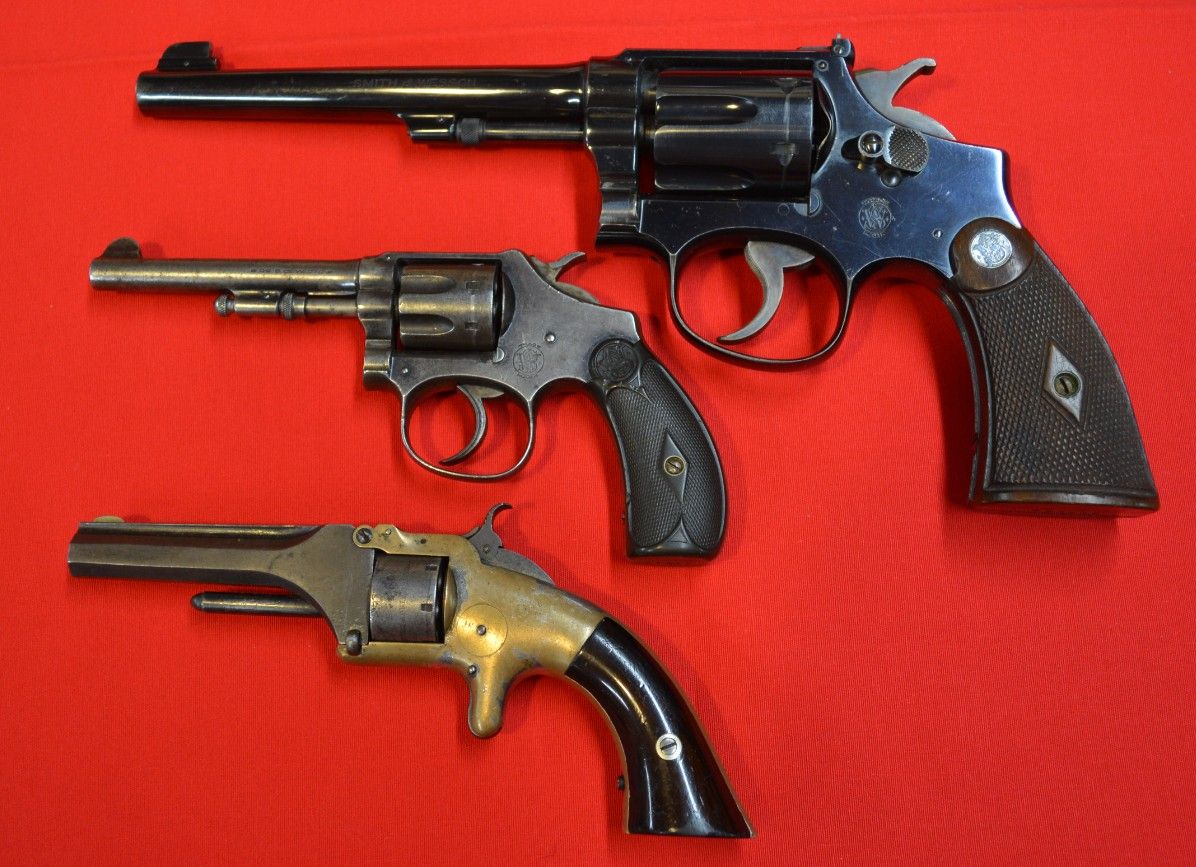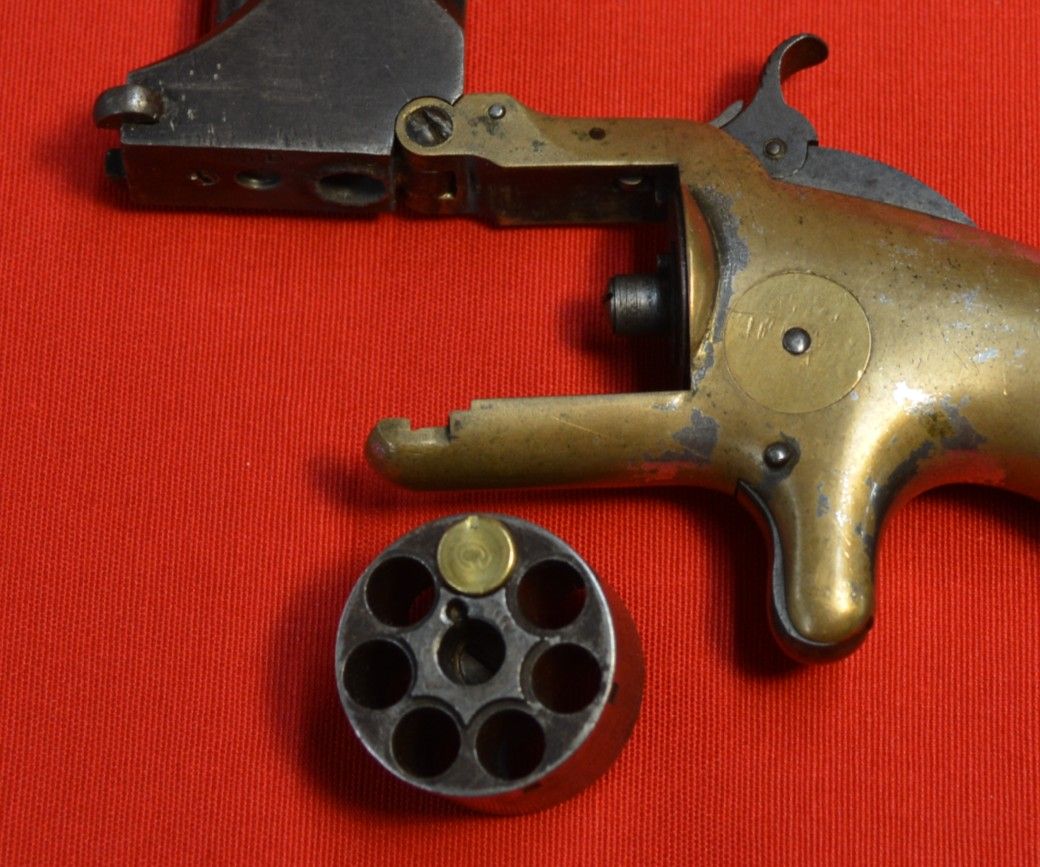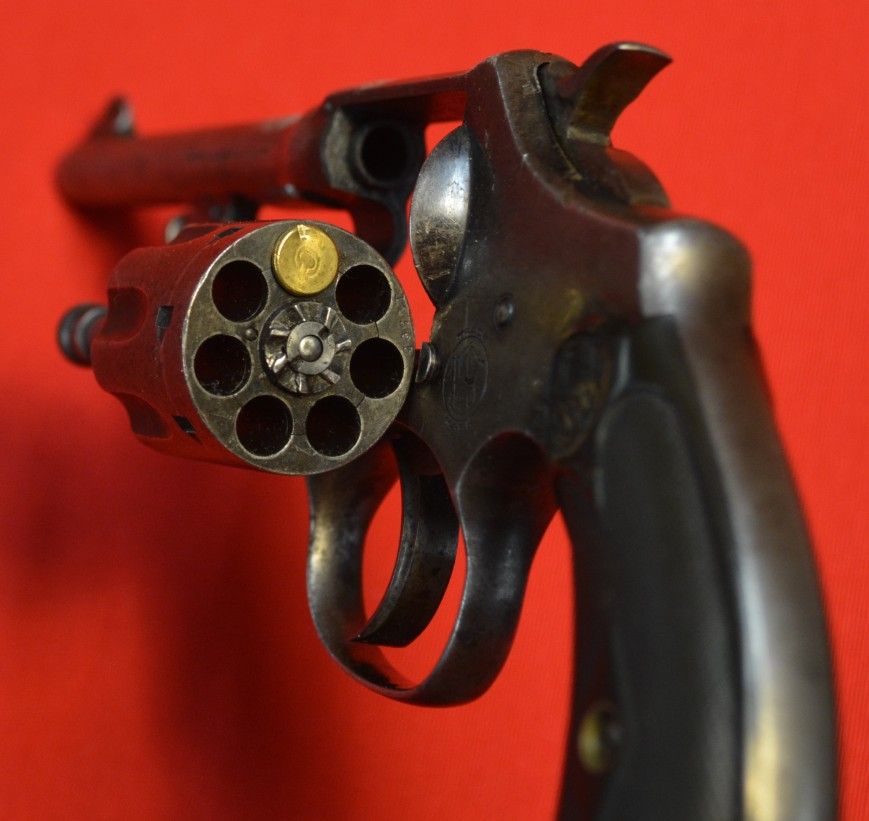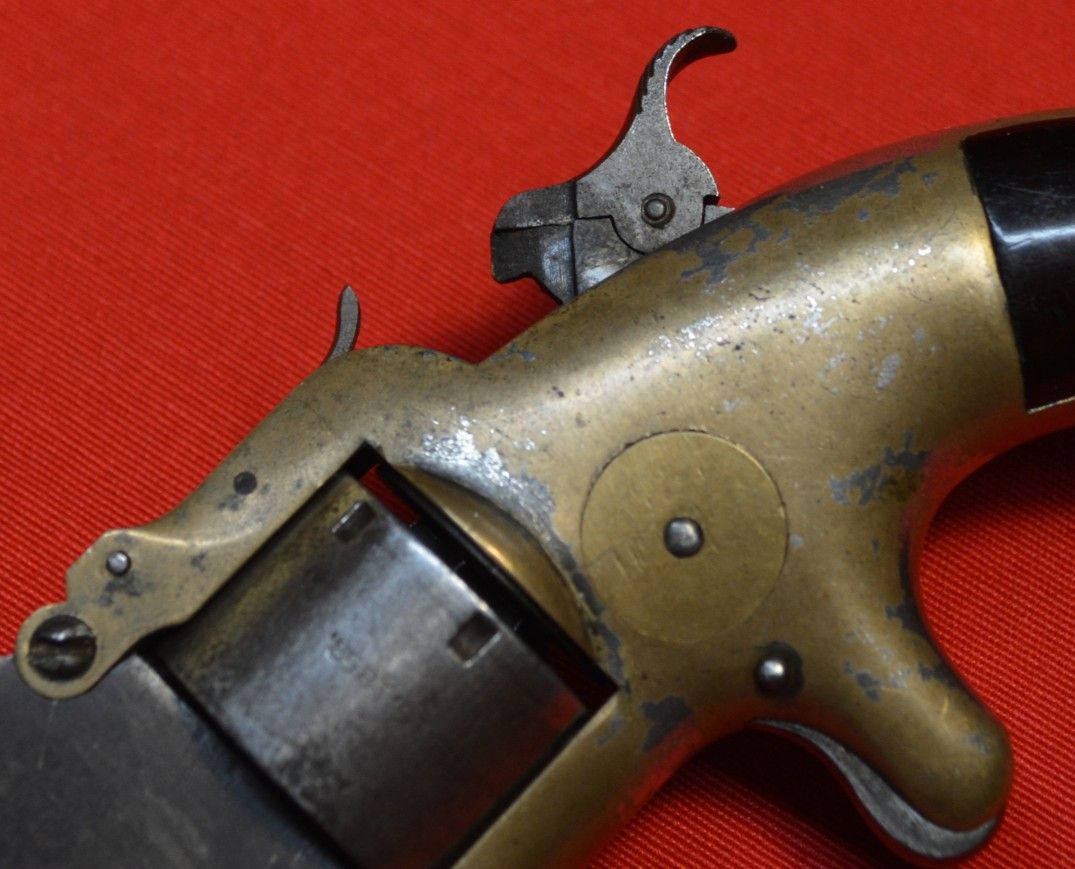Bill DeShivs
New member
I told you someone (who didn't read the thread) would tell you drywall anchors work!
They still don't.
They still don't.
Driftwood Johnson said:Didn't anybody look at my photos?
Seems to me S&W has been making .22 rimfire revolvers a little bit longer than that...weren't the very early (first?) S&Ws .22 rimfires, back in the 1860s or so??



It's worth pointing out that there is no easy way to always tell by looking if a rimfire is safe to dryfire.Peering sideways at the old girl, I can see that when the hammer is all the way down, there is a smidge of clearance between the firing pin and the face of the cylinder. So the firing pin actually will not strike the cylinder.
Peering sideways at the old girl, I can see that when the hammer is all the way down, there is a smidge of clearance between the firing pin and the face of the cylinder. So the firing pin actually will not strike the cylinder. Old Daniel and Horace were pretty clever guys.


Correct. That's why I was careful to include the caveat that with firing pins mounted on hammers you can get a good idea of true firing pin clearance and dryfire safety.So with both of these little revolvers, when the hammer is all the way forward, the firing pin is not going to go any farther. When the hammers reach their physical stop against the frame, that's it, that is as far as the firing pins are going to go. So when I say with the hammers all the way forward I can see clearance between the firing pins and the rear of the cylinder, that's it. The firing pins are absolutely not going to strike the cylinders. Period.
